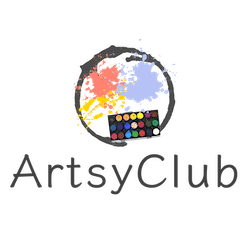Advanced Crochet: Taking Your Skills Further
TL;DRFor those looking to quickly enhance their crochet skills, this article delves into mastering advanced stitches, incorporating new materials, reading complex patterns, designing original patterns, and perfecting joining and finishing techniques. We also explore the supportive crochet community and resources available for continued learning and inspiration.

Table of Contents
Post stitches create a raised, textured effect on your crochet fabric. The front post double crochet (FPdc) involves yarn over (yo), inserting your hook from the front to the back around the post of the stitch below, yo, pull up a loop, yo, pull through two loops, yo, pull through remaining two loops.
Back Post Double Crochet (BPdc)The back post double crochet (BPdc) is worked similarly to the FPdc but from the back to the front around the post, creating a texture that recedes into the fabric.
Bullion Stitch
The bullion stitch is a decorative stitch that creates a tightly coiled spiral. It involves wrapping the yarn multiple times around the hook before pulling through all the loops on the hook. This stitch requires practice to maintain even tension and loop size.
Tunisian Crochet
Tunisian crochet is a hybrid between knitting and crochet. It uses a long hook and creates a dense, woven fabric. The basic Tunisian stitch, also known as the Afghan stitch, involves a forward and return pass, keeping all stitches on the hook like knitting.
Incorporating New Materials
Working with Different Yarns
Natural FibersExperimenting with natural fibers like wool, cotton, silk, and bamboo can introduce different textures and drape to your projects.
Synthetic YarnsSynthetic yarns, such as acrylic and nylon, offer durability and ease of care, making them suitable for items that require frequent washing.
Exploring Beads and Other Embellishments
Adding beads, sequins, or embroidery to your crochet can elevate your projects. Beads can be pre-strung on the yarn or attached individually with a crochet hook or needle.
Complex Pattern Reading
Understanding Advanced Patterns
Advanced patterns may include a variety of stitches and techniques. Familiarize yourself with crochet abbreviations and symbols to follow these patterns with confidence.
Chart Reading
Crochet charts use symbols to represent stitches and are often used for intricate patterns like lace or colorwork. Learning to read charts can open up a new world of pattern possibilities.
Designing Your Own Patterns
Inspiration and Creativity
Designing starts with inspiration, which can come from nature, architecture, fashion, or even a mathematical sequence. Keep a sketchbook or mood board to collect ideas.
Drafting and Testing
Drafting involves sketching your design and planning the stitches and shaping. Testing your pattern with a swatch can help work out any issues before starting the full project.
Joining and Finishing Techniques
Invisible Seams
Invisible seams are essential for a polished look, especially in garments. Techniques like the mattress stitch or slip stitch crochet can create nearly invisible joins.
Sophisticated Edging
Edgings add a finishing touch to your projects. From simple scallops to intricate lace, edgings should complement the main pattern and enhance the overall design.
Crochet Community and Resources
Online Communities
Online forums, social media groups, and websites offer a wealth of knowledge and support. They are great places to share your work, ask for advice, and find inspiration.
Workshops and Classes
Workshops and classes, whether local or online, can provide structured learning and feedback from experienced instructors. They are also a great way to meet fellow crocheters.
Conclusion
Advancing your crochet skills is a journey of exploration and continuous learning. By mastering advanced stitches, experimenting with new materials, understanding complex patterns, designing your own creations, and perfecting finishing techniques, you can take your crochet to new heights. Remember to engage with the crochet community and utilize available resources to support your growth as a crocheter. With patience and practice, the possibilities are truly limitless.



